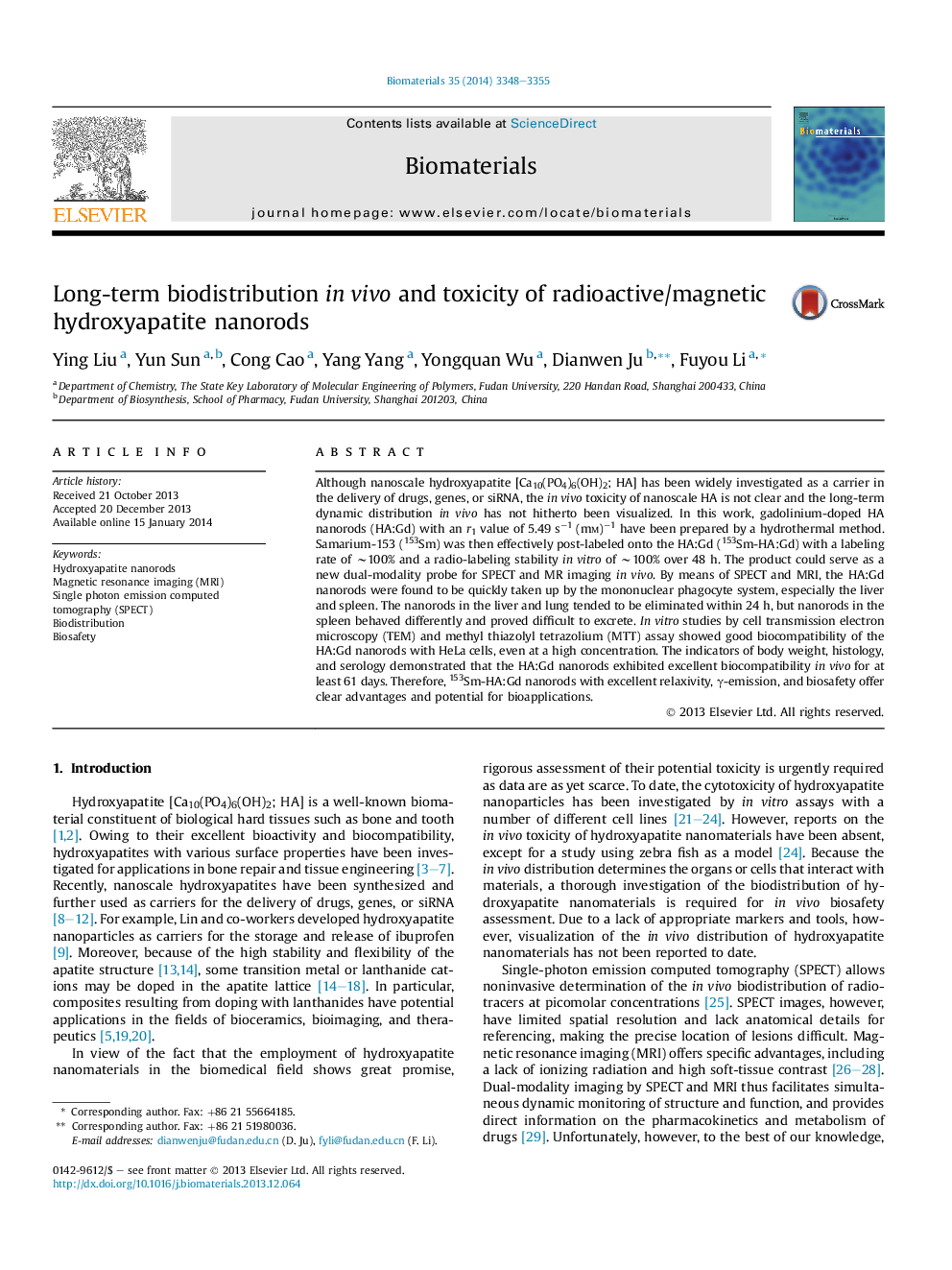| کد مقاله | کد نشریه | سال انتشار | مقاله انگلیسی | نسخه تمام متن |
|---|---|---|---|---|
| 10227949 | 469 | 2014 | 8 صفحه PDF | دانلود رایگان |
عنوان انگلیسی مقاله ISI
Long-term biodistribution in vivo and toxicity of radioactive/magnetic hydroxyapatite nanorods
ترجمه فارسی عنوان
توزیع بیولوژیک درازمدت در محیط زیست و در معرض خطر نانو ذرات هیدروکسی آپاتیت رادیواکتیو / مغناطیسی
دانلود مقاله + سفارش ترجمه
دانلود مقاله ISI انگلیسی
رایگان برای ایرانیان
کلمات کلیدی
موضوعات مرتبط
مهندسی و علوم پایه
مهندسی شیمی
بیو مهندسی (مهندسی زیستی)
چکیده انگلیسی
Although nanoscale hydroxyapatite [Ca10(PO4)6(OH)2; HA] has been widely investigated as a carrier in the delivery of drugs, genes, or siRNA, the in vivo toxicity of nanoscale HA is not clear and the long-term dynamic distribution in vivo has not hitherto been visualized. In this work, gadolinium-doped HA nanorods (HA:Gd) with an r1 value of 5.49 sâ1 (mm)â1 have been prepared by a hydrothermal method. Samarium-153 (153Sm) was then effectively post-labeled onto the HA:Gd (153Sm-HA:Gd) with a labeling rate of â¼100% and a radio-labeling stability in vitro of â¼100% over 48 h. The product could serve as a new dual-modality probe for SPECT and MR imaging in vivo. By means of SPECT and MRI, the HA:Gd nanorods were found to be quickly taken up by the mononuclear phagocyte system, especially the liver and spleen. The nanorods in the liver and lung tended to be eliminated within 24 h, but nanorods in the spleen behaved differently and proved difficult to excrete. In vitro studies by cell transmission electron microscopy (TEM) and methyl thiazolyl tetrazolium (MTT) assay showed good biocompatibility of the HA:Gd nanorods with HeLa cells, even at a high concentration. The indicators of body weight, histology, and serology demonstrated that the HA:Gd nanorods exhibited excellent biocompatibility in vivo for at least 61 days. Therefore, 153Sm-HA:Gd nanorods with excellent relaxivity, γ-emission, and biosafety offer clear advantages and potential for bioapplications.
ناشر
Database: Elsevier - ScienceDirect (ساینس دایرکت)
Journal: Biomaterials - Volume 35, Issue 10, March 2014, Pages 3348-3355
Journal: Biomaterials - Volume 35, Issue 10, March 2014, Pages 3348-3355
نویسندگان
Ying Liu, Yun Sun, Cong Cao, Yang Yang, Yongquan Wu, Dianwen Ju, Fuyou Li,
